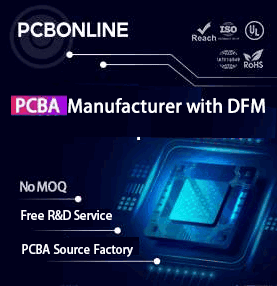With the rise of the Internet of Things (IoT) in the most recent years, there’s now a need for the best programming languages for embedded systems. As you can see, IoT needs to be programmed as if they were their traditional counterparts: computer and mobile. Yes, even with IoTs, there’s always some coding behind them.

So, which is the best programming language out there?
In this article, we’ll explore 5 of the best programming languages to date when it comes to embedded systems programming. We hope that by the end of this article, you’ll make the right choice on which programming language to use. Read on!
1. Java
“Java works as both a solution for traditional desktop software and embedded systems programming,” says Michael Jacoby, a programmer at Writinity and Last minute writing. “With stability and various dev tools at your disposal, Java is heavily used by embedded systems developers everywhere.”
Key features:
- Easy writing that’s portable, extensive, and downloadable
- Machine independent, thanks to the Java Virtual Machine (JVM)
- Allows developers to isolate critical parts of embedded apps from the remaining code
- Java-written programs are fast and smooth, even in old-generation hardware
2. C
C provides low-level access to developers, making it a powerful programming language option for both novice and expert. Besides its low-memory usage, C also offers great speed for a program to write on.
Key features:
- C has a built-in pointer that gives you access to even the most low-level system components.
- C compilers are quick and easy to build.
- Low-level functionality is made easier in C.
- C has a loose data typing policy that works well with any embedded systems programming.
- Seamless porting embedded programs across different devices
- A vast ecosystem for productivity to thrive
3. C++
Besides C, its counterpart – C++ – has the essentials for a more seasoned developer. Like C, C++ is not only faster but also accessible to low-level system resources. Plus, the memory stack to this programming language is free from unnecessary system calls.
Key features:
- Unlike C, inline functions in C++ can replace macro definitions.
- C++ is deemed safer to use, thanks to the enhanced implementation of templates and verbose casting.
- C++ can use overloaded functions and constructors.
- No crashes, even if it’s for naming conflicts.
- Equipped with a native constructor and destructor
4. Embedded C++
Wanted embedded-ness? Then look to Embedded C++. Unlike its predecessor, Embedded C++ is a subset that’s aimed at facilitating embedded systems programming without having to rely on the following (which are part of the traditional C++ program):
- Exception handling
- Namespaces
- Templates
- Multiple inheritance, AND
- Virtual base classes
Key features:
- Any C++ compiler can be used in Embedded C++.
- Embedded C++ will avoid excessive memory consumption by removing most C++ core functionalities.
- Embedded C++ doesn’t need Runtime type identification (RTTI)
- An EC++-specific compiler is required for optimization in C++.
5. Python
“The most notable programming language in web and enterprise, Python can be easily run inside many embedded devices these days,” says Caleb Johnson, a tech blogger at Draft Beyond and Research Papers UK. “The coding style is readable and concise to where it even accommodates novice programmers.”
Key features:
- An interpreted language, you’ll need a runtime when running Python
- Great for writing automation tests for real-time embedded systems
- Great at networking embedded systems
- Easy to parse logs
- Easy to process images
- Prototyping an application made easy
Conclusion
So, what IS the best programming language to date? Ultimately, that depends on the following:
- Your expertise
- What you’re coding
- Who you are developing for
However, it’s best to learn all of the programming languages discussed in this article, so that you’re ready to tackle almost any coding project. Once you learn all of them, you can tell the difference between all of them, and then apply the right ones to the right situations.
As referenced in the key features to each programming language, you’ll learn about how to approach certain applications with various languages. So, by learning from each language discussed today, and then choosing the right ones, you’ll come up with effective approaches that will work in various situations.
We hope that you keep these programming languages in mind, as you pursue software development. And, we hope that you’re able to choose the right language for the right project!
Ashley Halsey is a writer and editor at Lucky Assignments Manchester and Gum Essays. As a professional writer, she has been involved in many writing projects nationwide. In her spare time, she enjoys reading and traveling with her two children.

